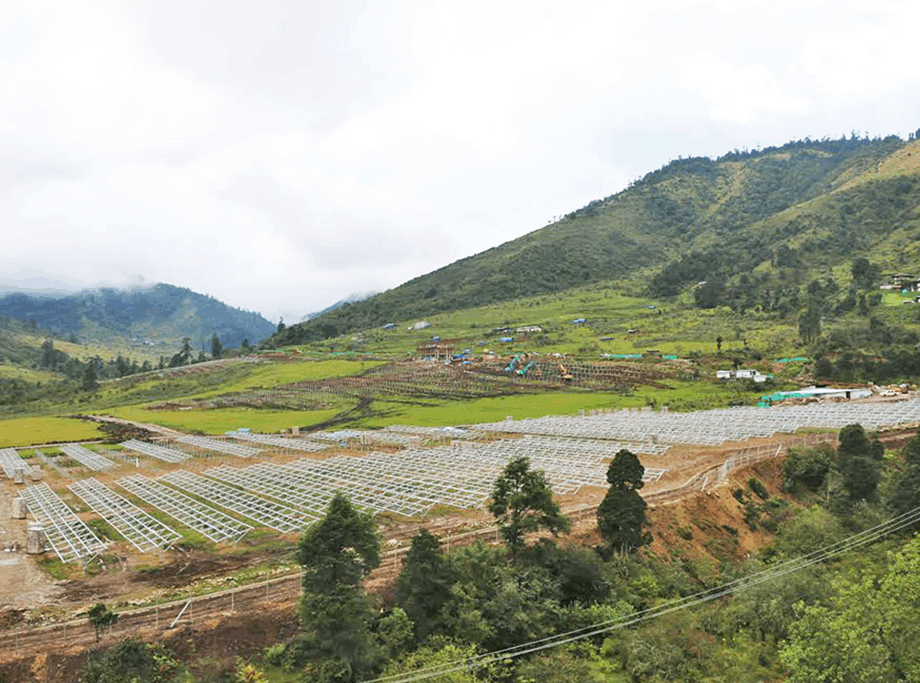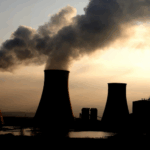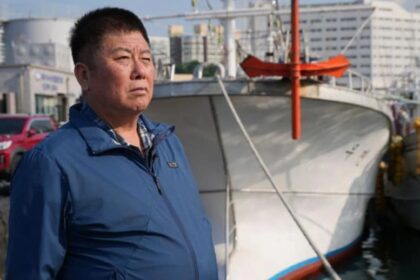A turning point for Bhutanese irrigation
Bhutan is moving fast to rethink how its farms get water. Unpredictable monsoon rains and drying springs are undermining old irrigation channels that once fed paddy fields and kitchen gardens. A new assessment funded by the International Development Research Centre and supported by the International Centre for Integrated Mountain Development sets out a plan to scale solar powered lift irrigation as a practical alternative to diesel pumps and aging gravity systems. Pilots in Paro are already operating, and expansion to Punakha is underway, signaling the start of a wider shift in how Bhutan waters its fields.
- A turning point for Bhutanese irrigation
- How solar lift irrigation works and why it fits Bhutan’s terrain
- What the new assessment proposes
- Funding the transition
- Gender equality and local capacity
- Early results from Bhutan’s farms
- Governance, environment, and social safeguards
- Regional learning and policy alignment
- What success could look like
- The Bottom Line
The report, titled Landscape Assessment of Renewable Energy Powered Lift Irrigation Systems in Bhutan, argues that clean energy can anchor a climate resilient agricultural future. It offers 38 recommendations covering policy, finance, technical standards, gender equality and social inclusion, environmental safeguards, and long term maintenance. The stakes are high. Only about one fifth of Bhutan’s cultivable land is irrigated, a gap that holds back yields and year round cropping. With agriculture employing a large share of the population and many households depending on farm income, reliable irrigation is becoming a core national priority.
How solar lift irrigation works and why it fits Bhutan’s terrain
Solar lift irrigation uses photovoltaic panels to power pumps that move water from rivers, streams, or storage tanks up to terraced fields. In valleys hemmed by steep slopes, water sources often sit below farmland. Gravity channels struggle to reach these plots, and diesel pumps add fuel costs and emissions. Solar power offers another path. Farmers can pump during daylight, store water in tanks, and distribute it through pipes to fields with controlled flow.
From gravity channels to pumps
Traditional systems in Bhutan are often open channels that lose water to seepage and evaporation. Maintenance is labor intensive and storm damage can interrupt supply at critical moments. Solar pumping replaces or complements these channels with a closed system. Panels convert sunlight into electricity. A controller regulates output. Submersible or surface pumps move water through buried or above ground pipes to storage. Farmers then irrigate using hoses, sprinklers, or drip lines. Water loss declines, on farm labor drops, and service can reach fields above the source level.
Costs and maintenance
Upfront investment is the main barrier. Panels, pumps, controllers, and pipelines require capital that many smallholders cannot afford. Yet once a system is in place, operating costs are low. There is no fuel bill, and maintenance focuses on keeping panels clean, checking wiring and fittings, replacing worn parts on a predictable schedule, and monitoring pump performance. Systems can be sized for small plots or entire communities. Smart design includes storage to buffer cloudy days and seasonal variability, and basic remote monitoring helps detect issues early.
What the new assessment proposes
The assessment sets a clear direction: make solar powered irrigation reliable, bankable, and fair. It calls for strong rules and certification, better financing models, and a plan to include women and marginalized groups at every step. It also argues for climate proofing and environmental safeguards from the start of each project, not as an afterthought.
In the report’s words:
The report states that using renewable energy for irrigation is no longer a future goal but a present necessity.
System quality is a recurring theme. The report urges national standards for design, installation, and performance so that farmers are not left with systems that fail after a season or two. Clear benchmarks for pumps, controllers, wiring, mounting, earthing, pipelines, and storage would help installers and protect buyers.
Standards and design protocols
Uniform technical protocols would reduce component mismatch, improve safety, and stabilize performance. These would cover everything from solar array layout and pump sizing to surge protection and pressure testing. Installers would follow checklists and document performance at handover. Certification for products and service providers would build confidence and make public funding more effective.
Site selection and climate risk screening
A structured framework for site screening and feasibility studies is central to the plan. The report recommends consistent methods for measuring water availability through seasons, assessing lift heights and pipe friction losses, selecting pump types appropriate to the head and flow, and estimating long term costs. Climate risk checks include exposure to floods, drought, landslides, and temperature extremes. Designs would include anchoring for floods, safe routing of pipes, and resilience to debris and sediment loads.
Funding the transition
Access to finance is the largest bottleneck. The report notes that current subsidies and credit lines are not enough to make systems affordable for many households. It proposes a diverse set of models that spread risk and reduce upfront costs while encouraging shared ownership and better maintenance.
- Asset leasing, where a service provider owns the equipment and farmers pay a monthly fee
- Water as a service, with farmers paying per volume delivered or per season
- Community ownership, where groups pool resources and manage a common system
- Lease to own contracts that convert fees into ownership over time
Public and development money can be blended with private capital to cut interest rates and extend maturities. Concessional finance can anchor early projects and reduce the cost of borrowing for communities. The report also recommends targeted subsidies for remote or disadvantaged areas and performance based incentives that reward uptime and verified water delivery rather than simple installation counts.
Global trends support this direction. The solar irrigation market is growing, helped by programs that reduce risk for early adopters. In India, for example, the PM KUSUM program shows how subsidies and service models can speed adoption of solar pumps for farmers. Market analysis points to steady growth driven by the need for efficient water use, with drip and sprinkler systems pairing well with solar pumps. These examples are not a blueprint for Bhutan, yet they show workable paths to scale when policy, finance, and service networks align.
Gender equality and local capacity
Women make up more than half of Bhutan’s agricultural workforce, yet they remain underrepresented in planning, finance, and technical roles linked to irrigation. The assessment calls for gender equality and social inclusion measures across project selection, finance, training, and monitoring. That means setting clear criteria that prioritize benefits for women and marginalized groups, ensuring access to credit and land documents where needed, and tracking outcomes with measurable indicators.
Capacity building is a core element. The Women’s Empowerment through Renewable Energy Powered Lift Irrigation Systems in Bhutan project, implemented by ICIMOD with the Department of Energy and the Bhutan Ecological Society and funded by IDRC, is running targeted trainings for female technicians and system operators. A one day program focuses on practical operation and maintenance, including preventive checks and basic troubleshooting. In August 2025, a two day design course in Thimphu trained 33 participants from government, training institutes, and private firms, with a special focus on women engineers. Sessions covered system sizing, component selection, and software aided design, followed by certification of participation.
The report proposes national certification programs for installers and operators, and manuals in Dzongkha and regional dialects to make guidance accessible. It also encourages field demonstrations, digital knowledge platforms, and partnerships with vocational institutes and universities. The goal is a pipeline of skilled people who can design, build, and keep systems running for decades.
Early results from Bhutan’s farms
Bhutan’s early solar irrigation projects offer a glimpse of what is possible. A pilot in Paro has shown that solar pumping can reach fields beyond the reach of traditional channels. Expansion to Punakha builds on lessons learned, including how to manage storage for late afternoon irrigation and how to position panels for seasonal sun angles.
In Bali Chiwog, Punakha, a new system launched in April 2025 pumps water from the Mochhu River up to elevated farmland. Local farmers had struggled with drying sources and erratic weather, which left plots uncultivated and incomes uncertain. The solar system provides a steadier supply, which supports plans to plant more reliably across seasons.
Gangri village is another case. A 16 kWp solar lift system now irrigates about 36 acres, serving 117 people. The installation, implemented by the Department of Agriculture and ICIMOD, pairs a solar array with pumps and pipelines to deliver water where gravity alone could not. Farmers report easier water access and less time spent managing long earthen channels.
Governance, environment, and social safeguards
Water is a shared resource, and irrigation systems can stress local ecosystems if poorly designed. The report recommends specific environmental impact assessment guidelines for renewable energy powered irrigation projects. These would set rules to prevent over extraction that depletes aquifers, reduce disturbance to riverbanks, and limit wildlife displacement. Designs should protect water quality and consider fish passages or intake screens where needed.
Climate proofing is essential. Projects should be engineered for flood surges, drought periods, wind loading on panels, and heat effects on electronics. Adequate storage, robust anchoring, and safe routing for pipes and cables reduce the chance of failure. Integrated Water Resource Management principles help align projects with catchment level hydrology and long term climate projections so that individual schemes fit within regional water budgets.
Social safeguards matter too. Community engagement during planning, fair water allocation rules, and local conflict resolution mechanisms can lower tensions when land or water use changes. Clear roles for operation and fee collection, backed by transparent bookkeeping, help prevent disputes and keep systems sustainable over time.
Regional learning and policy alignment
Bhutan is learning from neighbors with similar terrain. During a learning exchange in Nepal, Bhutanese delegates studied solar powered community water systems in the mid hills, taking lessons on technology selection, cost sharing, and maintenance planning that can transfer to irrigation. Delegates highlighted the value of strong community contribution to project costs, which often increases ownership and reliability.
National policy is aligning behind irrigation. Bhutan’s 13th Five Year Plan places priority on food and nutrition security and higher farm incomes, with irrigation and water supply as core levers. A project advisory committee formed under WERELIS brings together senior officials to coordinate across energy, agriculture, and local government. That cross sector approach reduces duplication and speeds decisions on standards, training, and financing.
What success could look like
Scaling solar lift irrigation will be measured in practical terms. Reliable water to fields at the right time. Lower costs per liter pumped than diesel. High uptime during peak irrigation windows. Higher cropping intensity on land that sits above streams or rivers. Better water productivity when solar pumping is combined with drip or sprinkler delivery. Stronger resilience when storage buffers dry spells.
Delivering these results requires service ecosystems that keep systems running. Spare parts must be available locally. Certified technicians should handle installation and warranty service. Local operators need simple checklists for cleaning panels, inspecting fittings, and tracking pump performance. Data on faults and repairs can guide training programs and product improvements. Universities and technical institutes can help test designs and feed graduates into government, private firms, and community enterprises.
Transparency will help. Publishing standards, installers’ certifications, and anonymized performance data can build trust. Farmers will choose solar pumping when it works reliably and predictably, when costs are fair, and when they know who to call if something goes wrong. A small number of high quality projects can set the tone. Communities can visit these sites, see storage tanks and pumps in action, and discuss management and fee structures with peers. That kind of practical knowledge exchange has already started through ICIMOD and partners, and it can scale through field days and online platforms like the ICIMOD WERELIS Bhutan page at this link.
The Bottom Line
- New assessment outlines 38 steps to scale solar powered lift irrigation in Bhutan
- Pilots in Paro and expansion to Punakha mark early momentum
- Only about 20 percent of cultivable land is currently irrigated, limiting yields
- Report calls for national standards, certification, and climate risk screening
- Financing is the main barrier, with proposals for leasing, water service, and blended capital
- Targeted subsidies and performance based incentives are recommended for early adopters
- Gender equality and social inclusion integrated across project design and training
- WERELIS trainings are building women’s technical skills and growing a local talent base
- Environmental impact guidelines and Integrated Water Resource Management are central
- Early projects in Bali Chiwog and Gangri show feasibility for community scale systems












